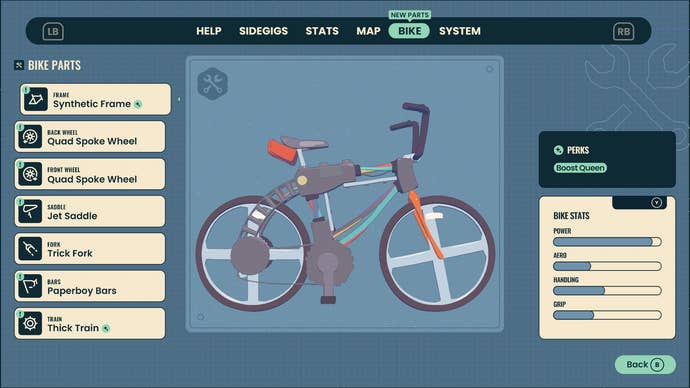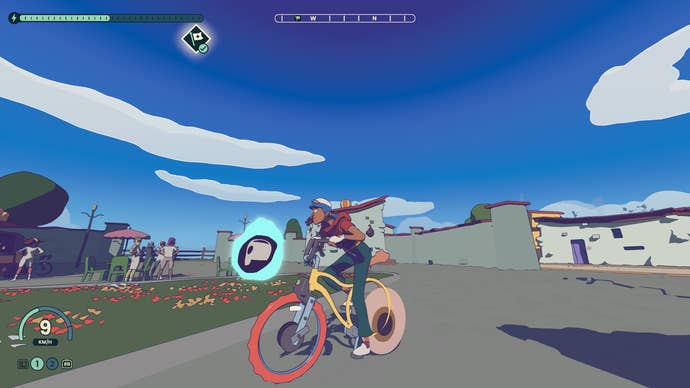I’ve been liking, even occasionally loving ghostly bicycle racer Wheel World, for several reasons. One, it’s relaxing enough for post-work decompression; two, it’s just competitive enough that I can enjoy winning without necessarily undermining point one; and three, it’s far enough outside my usual interests that the culture and lexicon it celebrates feel fresh and interesting to learn. Those of cycling, to be clear. I obviously know loads about ghosts.
Nonetheless, I’ve struggled to engage with its parts system, which isn’t ideal given it both determines the performance of your haunted bike and, outside of the story, acts as Wheel World’s primary measure of progression. I agree with Brendy (who doesn’t?) that once you earn enough metal bits to replace the rusting starter parts, there’s very little to be gained from fine-tuning towards a particular spec – an all-rounder bike can win anything. And, given the game’s gentle difficulty, probably will.
I wouldn’t demand that Wheel World be made harder or, heaven forfend, more realistic in order to make part-swapping more cerebral and valuable. If anything, I’m demanding the opposite: let me, if merely for japes, create truly abominable one-trick bicycles, literally geared so far towards a single stat that they become truly hopeless at everything else.

The real problem, I feel, isn’t just that balanced builds are too good. It’s that it’s actually quite hard not to create a balanced build. After rolling the credits, I immediately opened up the parts screen and conspired to birth unto the world a bike so stupidly fast, yet simultaneously so gripless and crap in the corners, that a single rotation of the pedals would propel me off the planet’s curvature and into the sun. I’d have one huge advantage over other bikes plus several horrible disadvantages, and learning to balance them would take nothing short of forgetting everything I knew about bicycling and becoming one with the machine. Profane as it was.
Instead, rummaging through four hours’ worth of unlocks produced… a quite fast if somewhat un-aerodynamic bike that needed earlier braking on tight turns. I rang my creation’s disappointingly mundane bell to challenge another cyclist and won the subsequent race, without issue, by riding more or less like I had for the preceding four hours. Bor-ing.
My next attempt at a perilously overspecialised design was all about grip. The plan was to subvert how Wheel World usually handles cyclist collisions – pinging you off against a tree while your assailant trundles on unharmed – by steamrolling through the pack on an immovable traction powerhouse, swatting away rivals like it was Burnout 3 on two wheels. Sadly, despite a full rebuild that filled the grip stat meter to the brim (including, by some logic, a seat with nails sticking out of it), riding the thing still felt underwhelmingly ordinary. I’d shrug off some crashes that previously would have sent me skidding, but some competitors could still sideswipe me with enough force to knock the gripmobile off course.

In the end, my quest to construct Wheel World’s daftest bike came down to a bunch of cheap sight gags. The rear wheel is a big eye. The seat is a cupped hand. The drivetrain does not appear to be connected to anything. Ha ha? No, not ha ha, as even this served as an adequate race machine, easily splashing another roaming rider at the first ask.
It’s still a fine game, to be clear. The lack of interest in mad loadouts does make sense given Wheel World is inspired more by the freeing, wind-in-your-face, pseudo-flying sensation of casual riding than it is by stunts and speed records. Still, it’s also a fantasy tale where you get boost powers from magic skulls. Tonally, it has the room to let me build a spoked rocketship with barely functioning handlebars.







